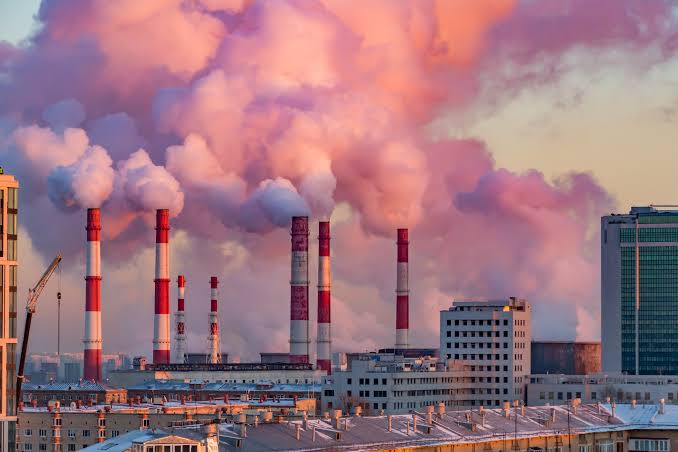AIR POLLUTION: A THREAT TO OUR HEALTH
Air Pollution: Causes, Effects, and Solutions
What is Air Pollution:
Air Pollution is an ever-growing concern with far-reaching effects. In particular, Air Pollution affects the health of millions, damages ecosystems, and contributes to climate change. As a result of our world’s growing industrialization and urbanization, the quality of the air we breathe is deteriorating at an alarming rate. Therefore, in this article, we will explore this complex issue in depth, examining its causes, far-reaching effects, and potential solutions.
1. Definition:
Pollution is the contamination of the Earth’s atmosphere with harmful substances, known as pollutants. These pollutants can be either natural or human-made and often include:
1. Particulate Matter (PM):
Specifically, these are tiny solid particles or liquid droplets suspended in the air, which can be inhaled into our lungs and lead to various health problems. Therefore, they are typically categorized by size: PM2.5 (particles with a diameter of 2.5 micrometers or smaller) and PM10 (particles with a diameter of 10 micrometers or smaller).
2. Ground-Level Ozone:
Ground-level ozone, different from the beneficial ozone layer in the upper atmosphere, forms when volatile organic compounds (VOCs) and nitrogen oxides (NOx) react in the presence of sunlight. It can irritate the respiratory system and harm vegetation.
3. Nitrogen Dioxide (NO2):
Furthermore, this reddish-brown gas primarily originates from vehicle emissions and industrial processes. It can irritate the respiratory tract and worsen asthma symptoms.
4. Sulfur Dioxide (SO2):
SO2 is produced by the burning of fossil fuels containing sulfur, such as coal and oil. Specifically, it can irritate the respiratory system and contribute to the formation of acid rain.

2. Sources of Air Pollution:
Understanding it’s sources is essential for effective mitigation strategies. There are some basic sources of air pollution such as:
1. Transportation:
More specifically, the combustion of gasoline and diesel fuels in vehicles is a major source of air pollution.Specifically, emissions from cars, trucks, and buses release pollutants like nitrogen oxides (NOx), carbon monoxide (CO), and particulate matter into the atmosphere.
2. Industrial Activities:
Specifically, industrial facilities, including factories and power plants, emit a significant amount of pollutants. Therefore, these emissions include sulfur dioxide (SO2), nitrogen oxides (NOx), volatile organic compounds (VOCs), and heavy metals.
3. Agriculture:
Agricultural activities release ammonia (NH3) and methane (CH4) into the atmosphere. Livestock farming is a notable source of methane emissions, while the use of fertilizers contributes to ammonia levels.
4. Construction and Demolition:
Specifically, construction and demolition activities generate dust and particulate matter, which can become airborne and contribute to localized air pollution.
5. Natural Sources:
Natural sources of pollution include dust storms, wildfires, and volcanic eruptions. While these events are uncontrollable, they can still have significant short-term impacts on air quality.

3. Consequences of Air Pollution:
Specifically, air pollution has far-reaching consequences for human health, the environment, and the economy.
1. Health Effects of Air Pollution:
Specifically, air contamination is connected to an extensive variety of medical conditions, including:
– Respiratory issues such as asthma, bronchitis, and lung cancer.
– Cardiovascular diseases.
– Developmental issues in children.
– Premature death.
2. Environmental Impact of Air Pollution:
In addition, it can harm ecosystems in various ways:
– Damage to vegetation and forests.
– Acid rain, which harms aquatic life and infrastructure.
– Harmful algal blooms in water bodies.
– Disruption of wildlife and ecosystems.
3. Economic Costs of Air Pollution:
Moreover, the economic costs of air pollution are substantial, including:
– Healthcare expenses for treating pollution-related illnesses.
– Reduced worker productivity.
– Damage to infrastructure and crops.
– Decreased tourism in polluted areas.

4. Combating Air Pollution:
Specifically, addressing air pollution requires a multi-pronged approach involving governments, industries, and individuals. Key strategies include:
1. Regulation and Enforcement:
Specifically, governments must enact and enforce air quality standards and emissions regulations. Furthermore, industries should be held accountable for reducing emissions through strict monitoring and penalties for non-compliance.
2. Transition to Clean Energy:
Specifically, reducing reliance on fossil fuels and transitioning to clean and renewable energy sources is critical. This includes promoting electric vehicles and increasing the use of wind, solar, and hydropower.
3. Improved Transportation:
To illustrate, investing in public transportation, promoting fuel-efficient vehicles, and encouraging walking and cycling are all strategies that can help reduce emissions from the transportation sector.
4. Reforestation and Green Spaces:
Establishing trees and making green spaces in metropolitan regions can assist with engrossing toxins and further develop air quality..
5. Public Awareness:
Educating the public about the health risks of air pollution and encouraging behavior changes, such as reducing energy consumption and using public transport, is vital.
5. Conclusion :
Pollution is a global crisis that demands immediate attention and action. It affects our health, environment, and economy, and its consequences are felt by everyone, regardless of location or socioeconomic status. To illustrate, to safeguard the well-being of current and future generations, we must work together to combat air pollution through regulation, technological innovation, and sustainable practices. For example, regulation can help to reduce emissions from vehicles and factories, technological innovation can lead to the development of cleaner energy sources and vehicles, and sustainable practices can help to reduce our reliance on fossil fuels. Only by taking these steps can we hope to breathe cleaner air and create a healthier, more sustainable world.
